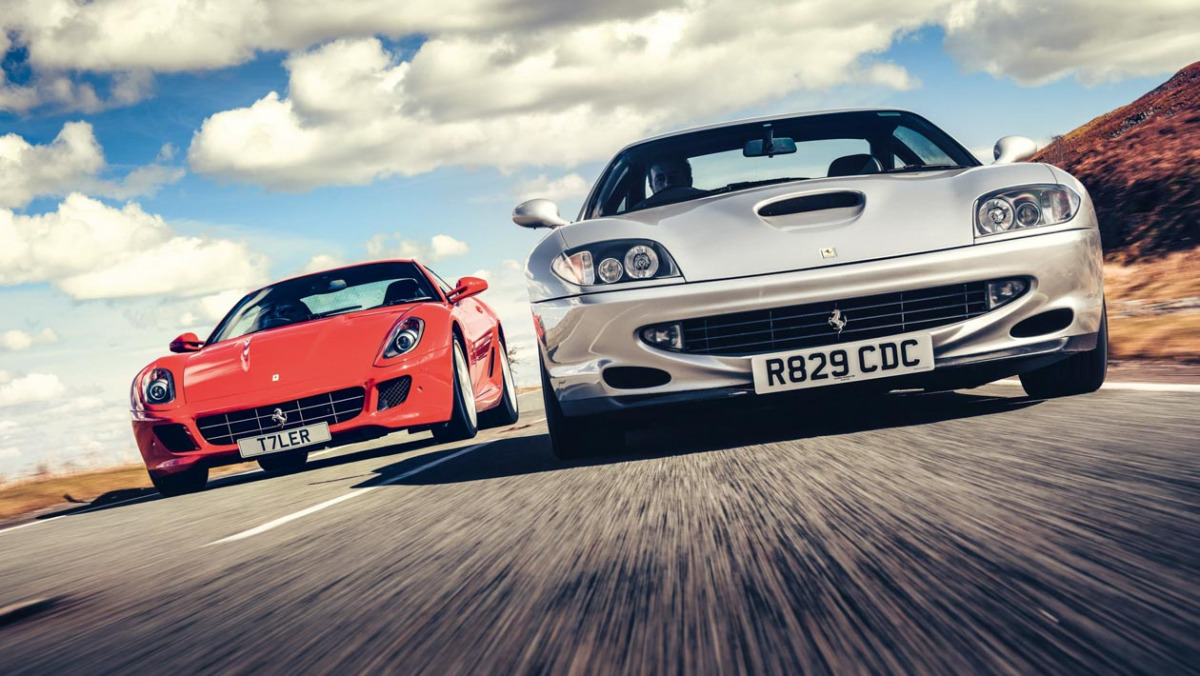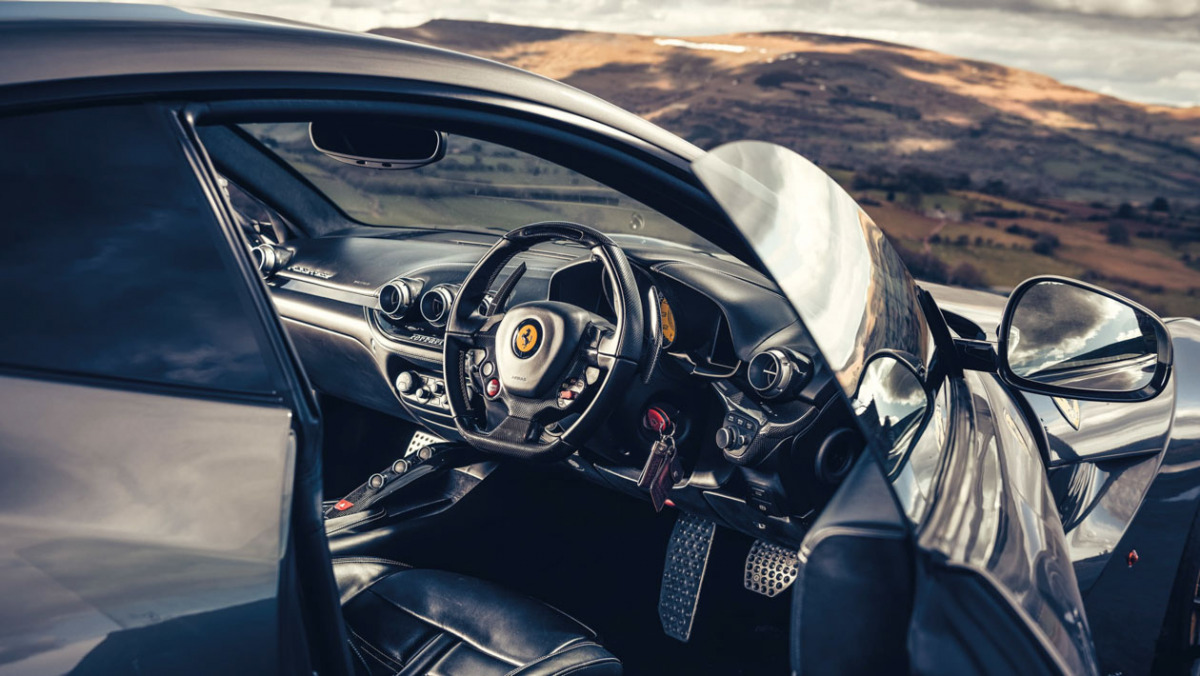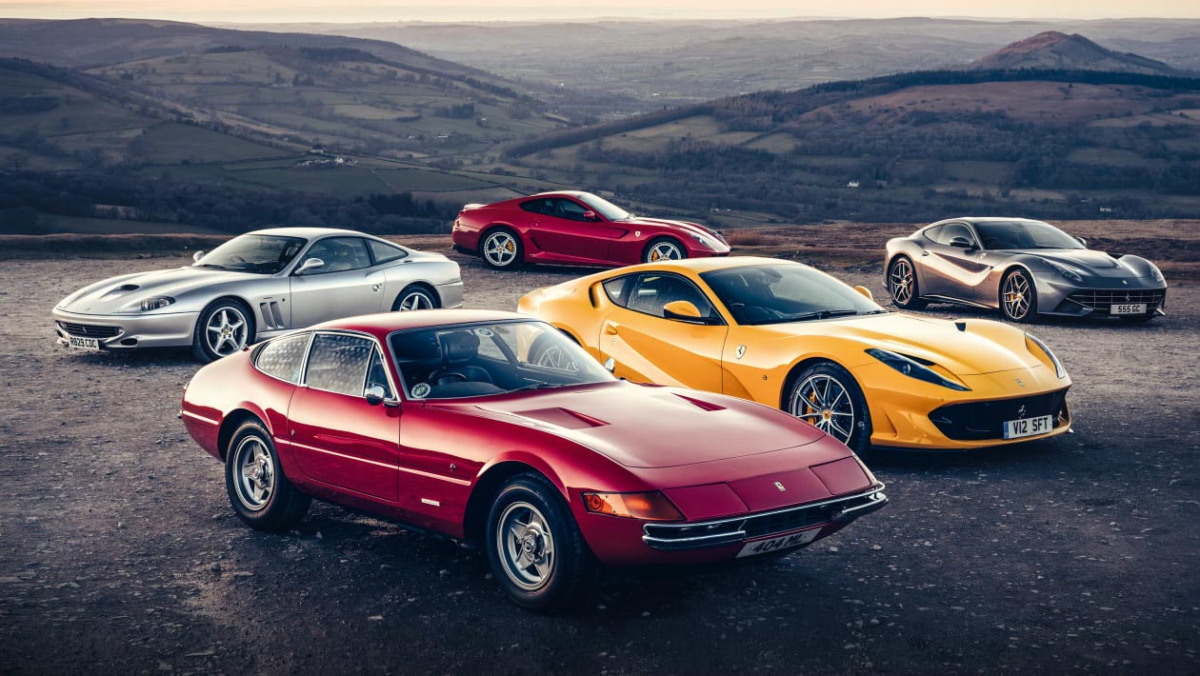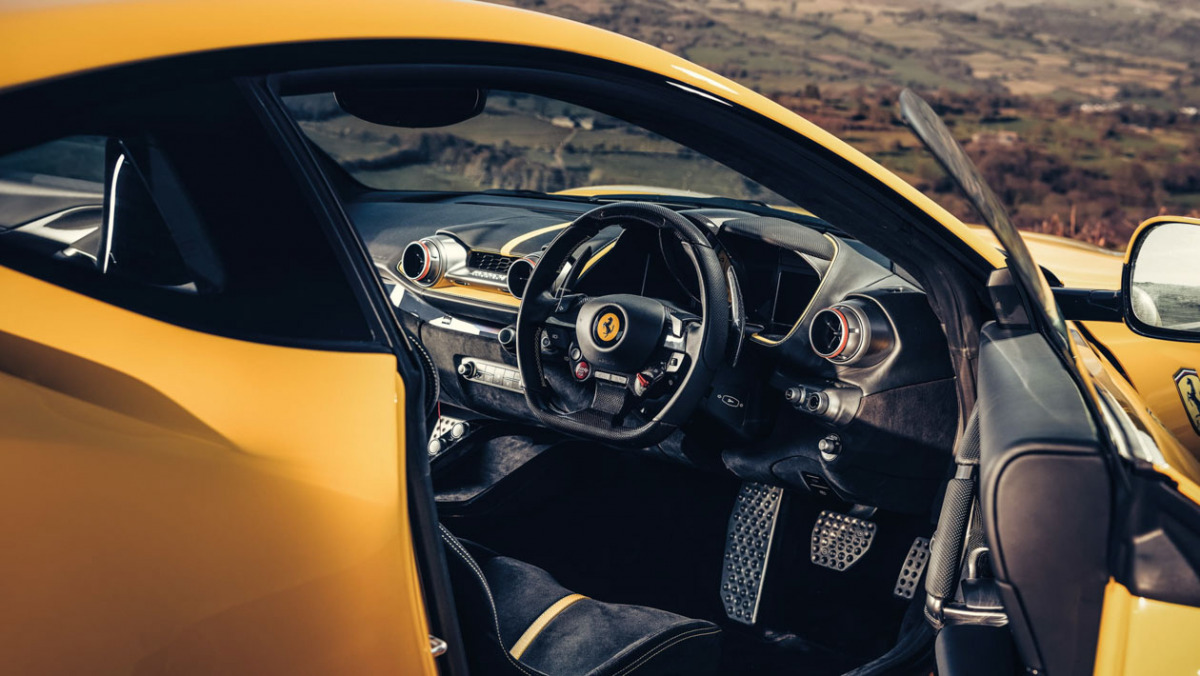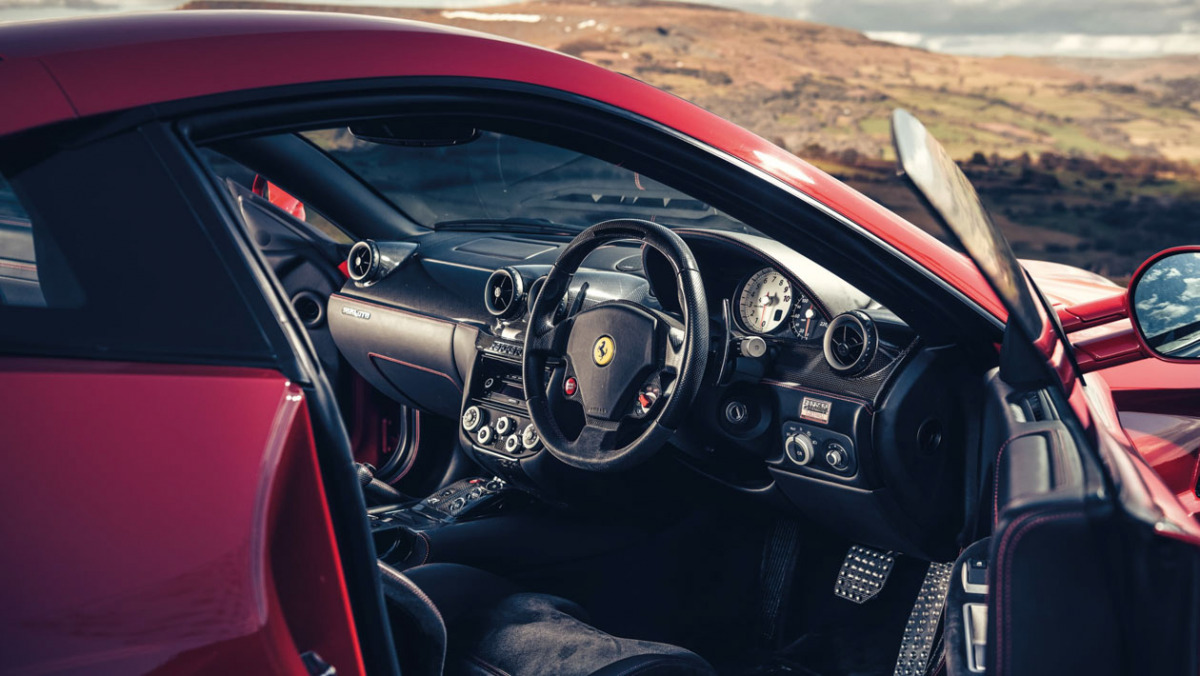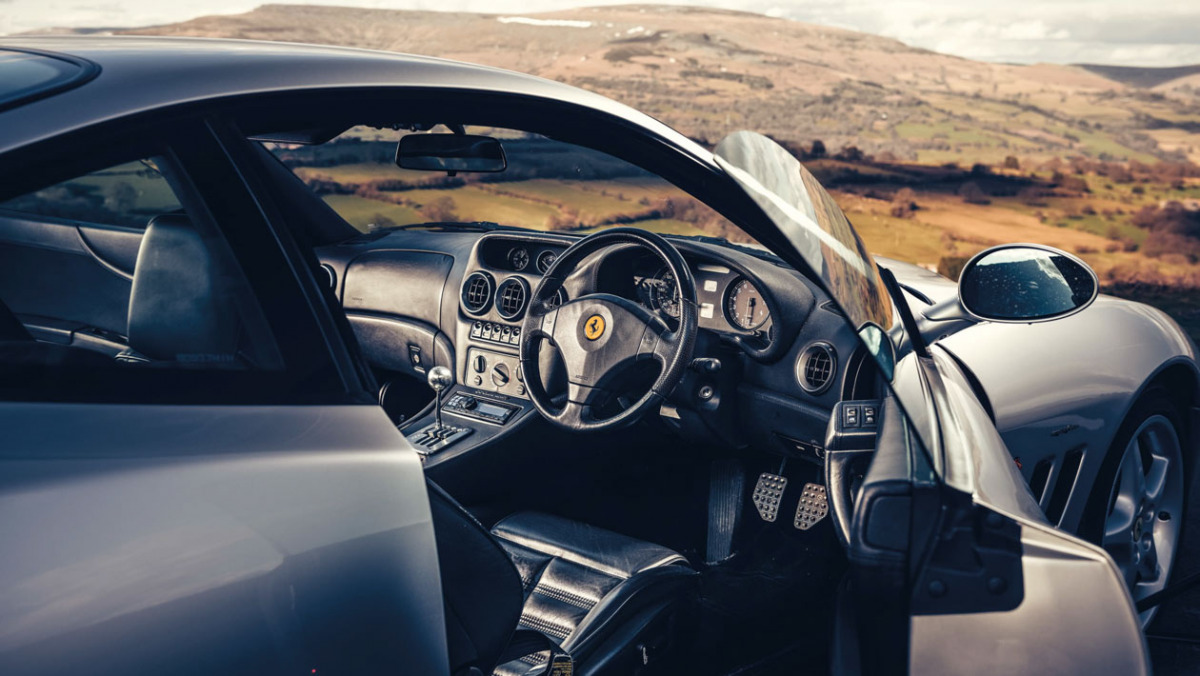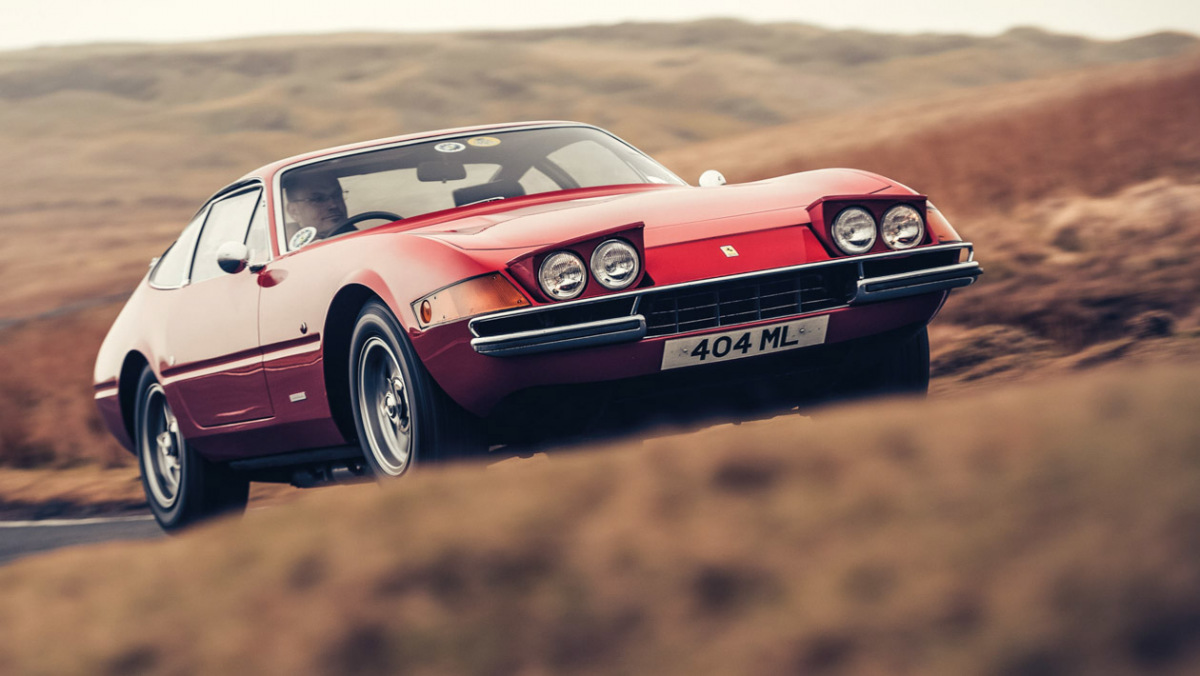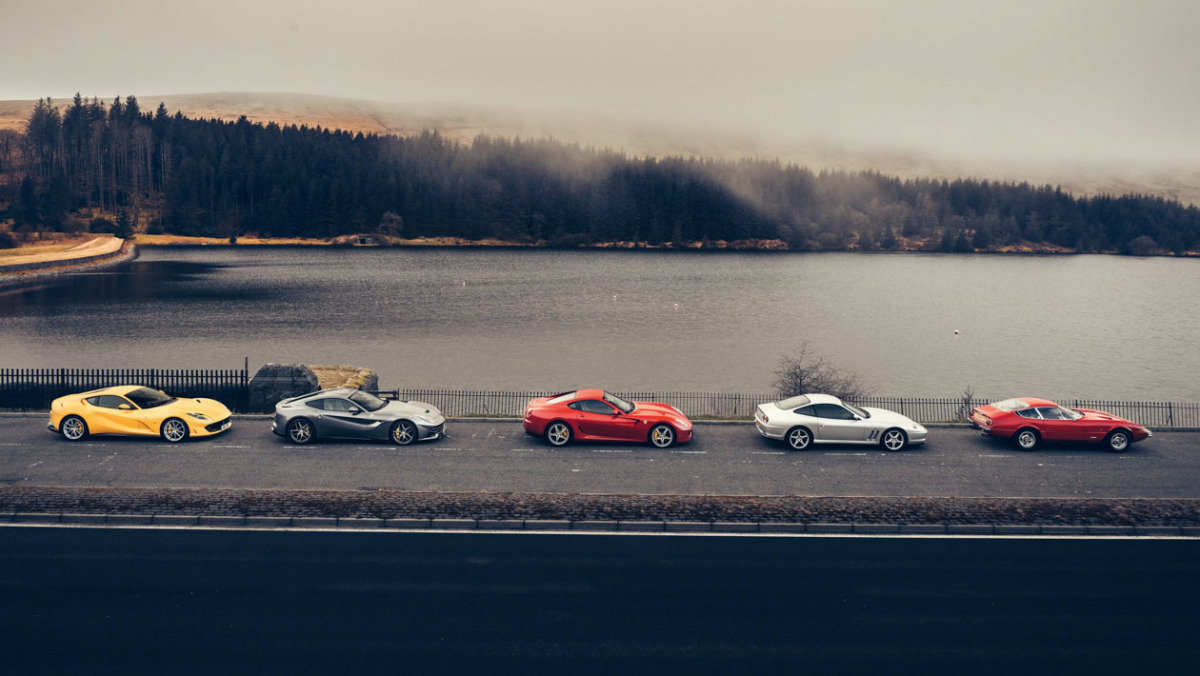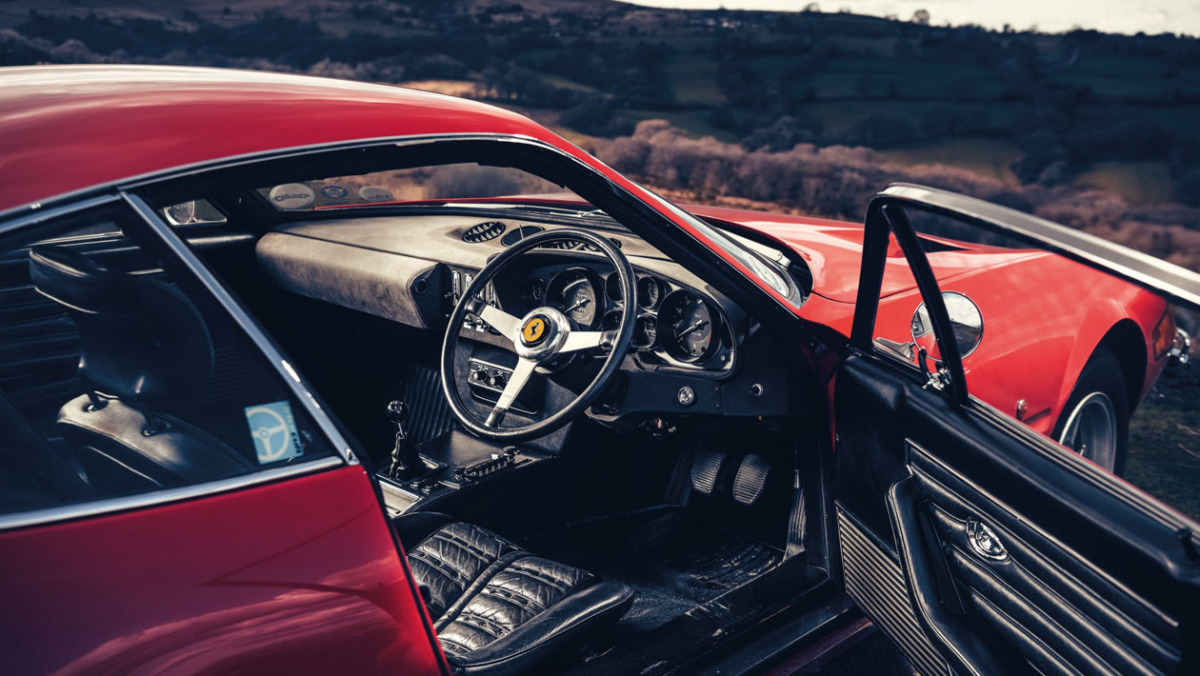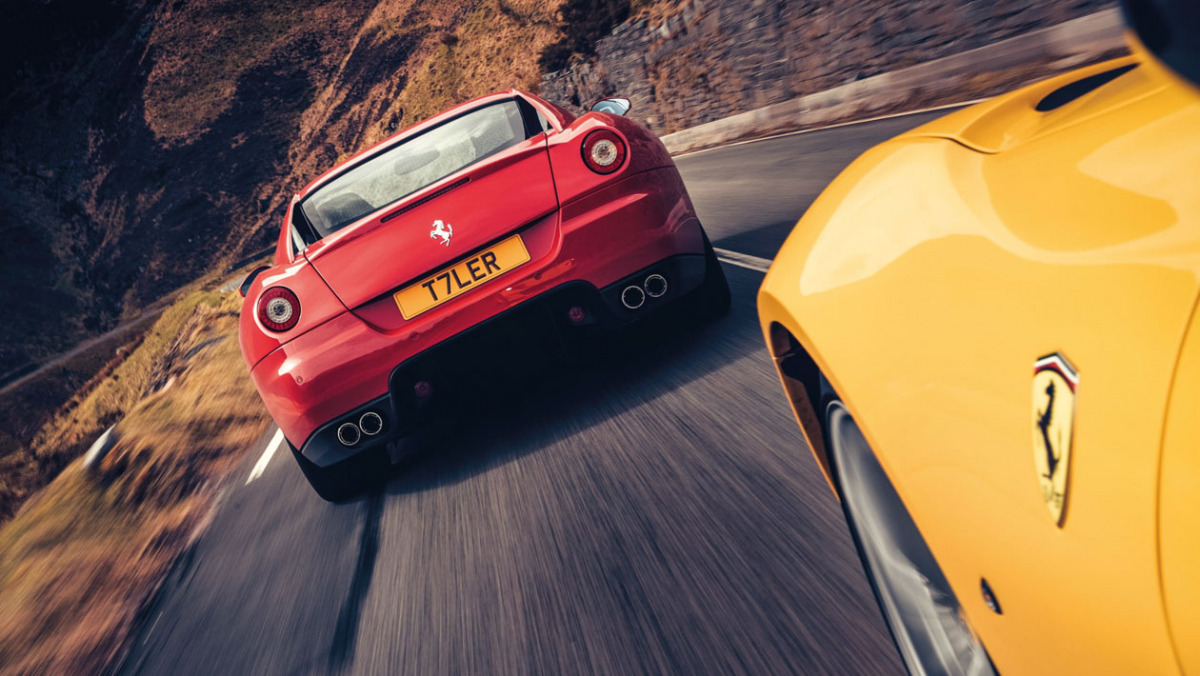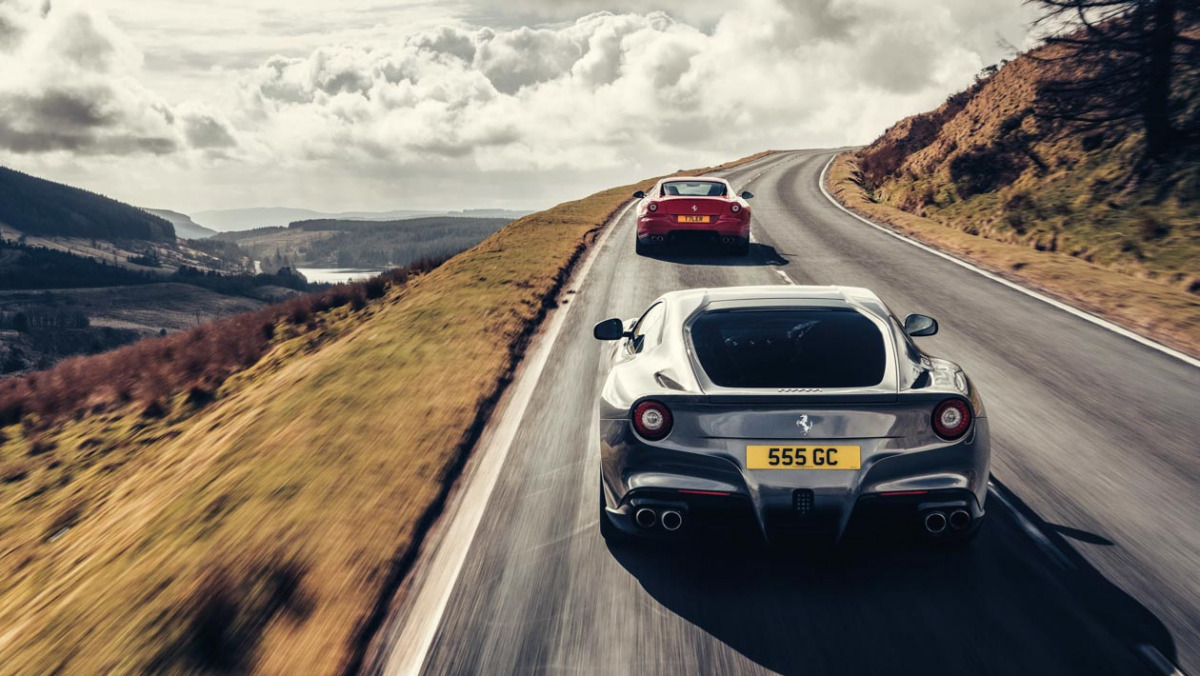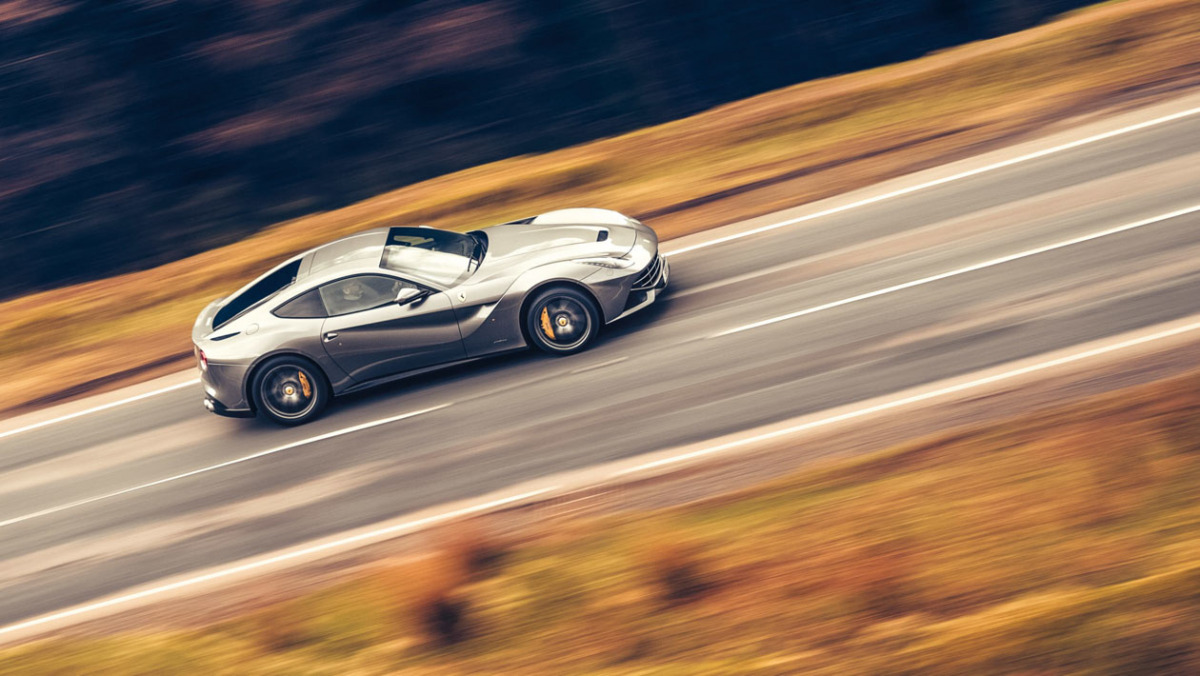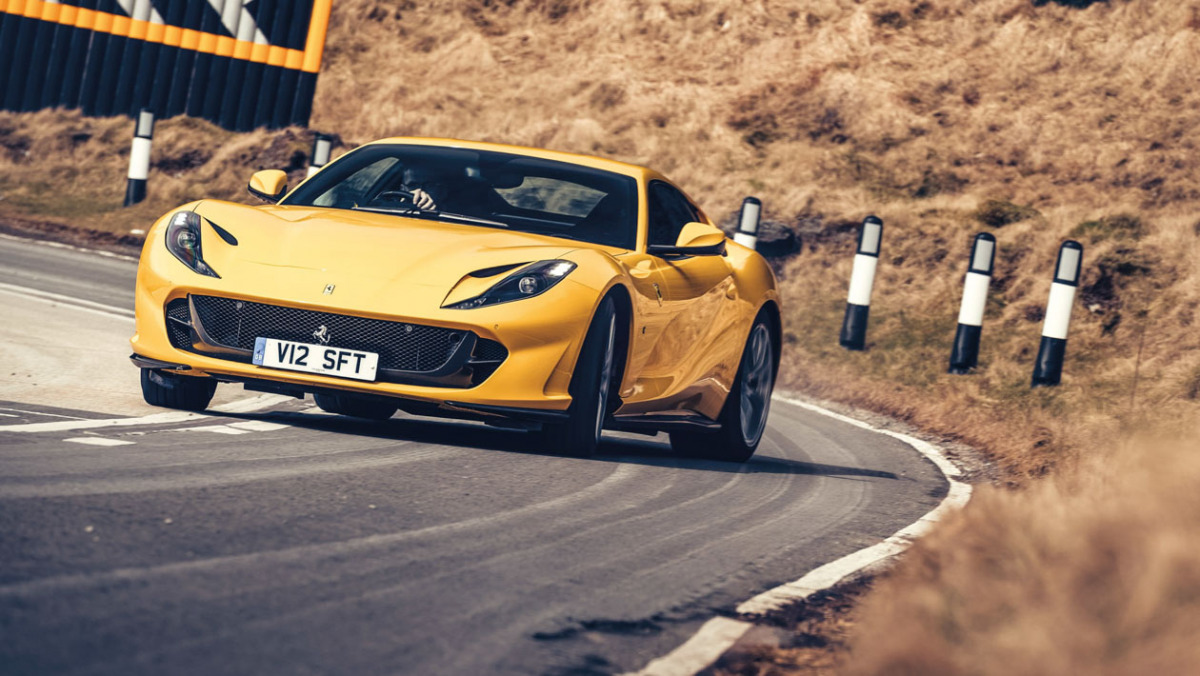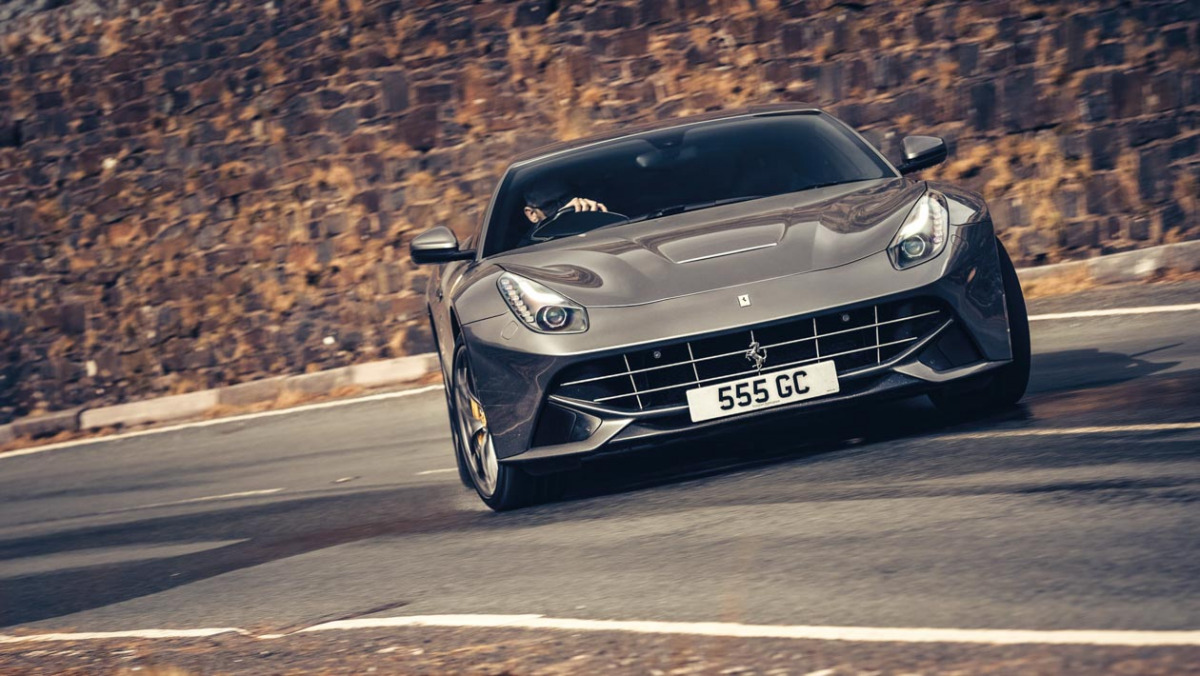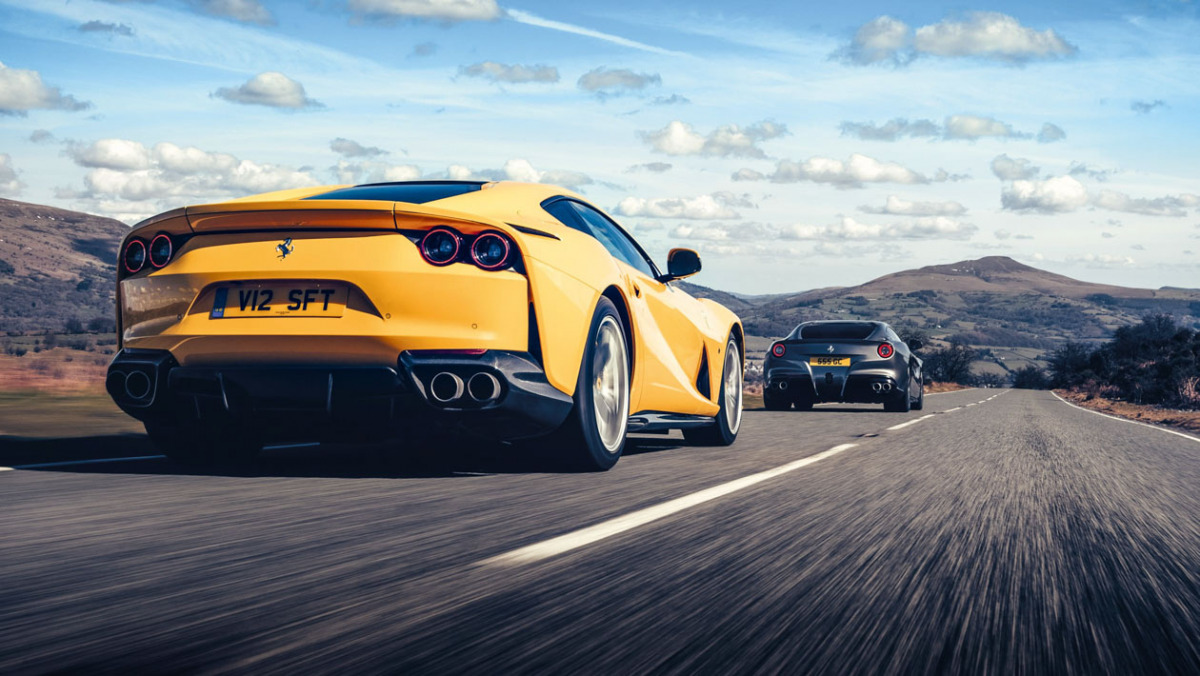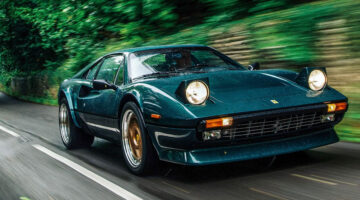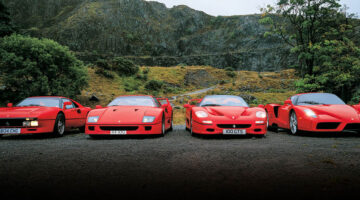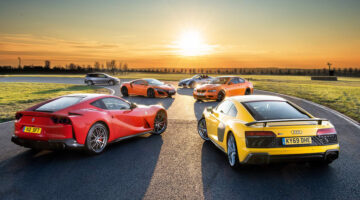From ’60s Daytona through to today’s 812 Superfast, Ferrari has offered an unrivalled series of front-V12-powered super-GTs. We drive five of the best
In 1968, the newly launched Ferrari 365 GTB4 ‘Daytona’ was the fastest production car in the world. It had 347bhp and stormed on to 280kph. Today, the 812 Superfast has almost 800bhp and does 340kph but is more than 80kph shy of being the fastest production car in the world. It’s a small illustration of how the automotive landscape has changed in the last 50 years, though there are a few constants, and one of them is Ferrari’s devotion to the V12 engine.
The V12 is an unbroken engineering thread woven right through the history of the Modenese company, starting with its first car, the 125 S of 1947. That was fitted with a 1.5-litre V12, the first of the legendary Colombo line, and there has been a V12 in the line-up ever since. Well, technically there has, and we’ll come to that, because it has a part to play in this feature comparing Ferrari’s best GTs of the last half century.
> 819bhp Ferrari 812 Competizione revealed in full – hardcore V12 GT returns
Remarkably, the 60-degree V12 designed by Gioacchino Colombo back in the ’40s is the same as that fitted to the Daytona… in principle. In fact, not a single component is shared, the gradual upsizing over the intervening 20 years resulting in a whole new iteration that boasted four camshafts and a swept volume of 4.4 litres, or a little over 365cc per cylinder to be precise. So the description of the car was there in the original 365 GTB4 name, the numbers describing the engine (the trailing 4 denotes the camshaft count) and the letters the type of car: GT for Gran Turismo, B for Berlinetta. But Daytona has a ring to it.
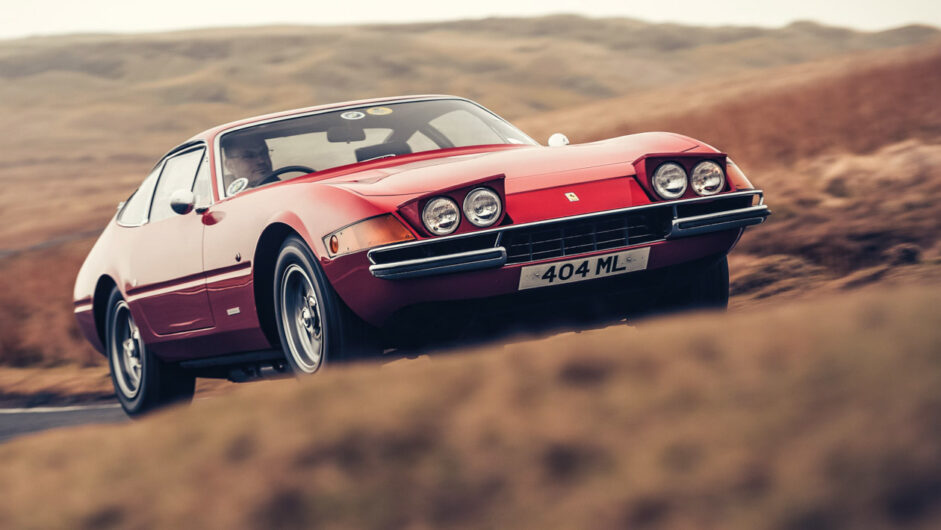
This unofficial name was coined after Ferrari beat Ford in its own backyard with a 1-2-3 finish at the 24 Hours of Daytona, sweet revenge the year after Ford beat it at Le Mans in ’66. It was also a reminder of Ferrari’s success in motorsport each time the 365 was compared with the Miura, created by that upstart company half an hour up the strada in Sant’Agata. Lamborghini had also stolen some of Ferrari’s thunder in ’66 when it put a V12 behind the seats of the beautiful and innovative Miura and created the world’s first supercar. Ferrari responded by enlarging the 275 GTB4’s V12, raising its power to just more than the Miura’s 345bhp and enabling it to push the Daytona on to a top speed that was just a little higher too.
I’ve always been in awe of the Daytona. Although I built my first aged 24, I hadn’t driven one until Matthew Lange generously agreed to bring his along to our photoshoot. For clarity, the one I built was a 1:24 scale Fujimi model, which I sprayed on newspaper laid out on the living room carpet. Car makers run a current through car bodies when they paint them because it attracts the paint. So does synthetic carpet, as my large, shaded square carpet ‘feature’ proved.
> Ferrari 550 Maranello: history, specs and used review
The Daytona is such a fabulous-looking car, a Fioravanti design for Pininfarina that’s great from any angle and looks like it’s doing 70 when it’s standing still. It’s hard to believe that the Miura and Daytona were created within a couple of years of each other, in the same country, each beautiful and each explicitly conveying their mechanical layouts.
I’ve always loved the Daytona’s interplay of curves and sharp edges. In fact, I’ve admired it from afar for so long, I’m not sure I want to drive it for fear that, well, you know. Climbing behind the wheel, the one thing that doesn’t surprise me is that there’s not a huge amount of room inside for such a decent-sized car. I’ve always thought the body looks like it comes up a bit short, showing too much sill, and it feels like that inside, the short-backed bucket just big enough, the large wheel almost in my lap.
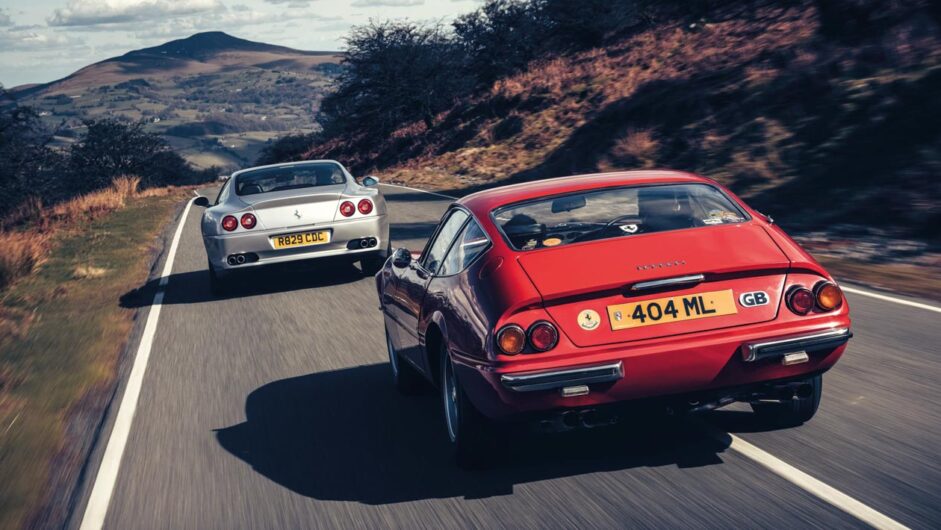
The instrument pod is pleasingly crammed with dials, just as it should be, there are multiple sliders for the heating and ventilation, and below is the open gate of the manual shift. It’s positioned on the left of the console, close to hand on left-hand-drive cars, and stays there for right-hand-drive cars. The gearbox itself is at the rear, in combination with the rear diff, which helps weight distribution but means it doesn’t benefit from the warming effect of the engine, so on a chilly day such as this it can take an age for second gear to become available.
The 4.4-litre V12 is a gem, catching quickly with just a small squeeze of the throttle, and it’s beautifully mannered too, picking up cleanly and with delicious character from tickover. This speaks well of the maintenance of the regiment of carburettors sitting upright between the cylinder heads. There are six of them, 12 throttles in all, and you can sense the multiple connections and joints and butterflies responding each time you press the throttle.
> Ferrari SF90 Stradale 2020 review – driving the game-changing 987bhp hybrid flagship
It’s a quick car but not fast by modern standards, yet as I get to know it, it’s all I wanted it to be. And, says its owner, it’s as fast as the brakes can cope with anyhow. Even when all the gears are freely available, shifting is a methodical process: you need to heel-and-toe on downshifts to match revs and then encourage the lever between the tines rather than forcing it. Usefully, early in its life, this example was fitted with power steering, so it’s manageable at all speeds and helps ease you into the process of driving a Daytona, which benefits from a deliberate approach.
You start to get a feel for what gets the best out of the world’s fastest car circa 1968 after a few corners, and it’s this: be positive into turns, get the nose to the apex early and let the car settle. Then pick up the throttle early to sit the Daytona onto its rear axle and pour on more power as the corner unwinds so that you’re getting the most from all four balloon-like XWX Michelins. You know when you’ve got it just right. Add in the effort required to finesse the gearshift and the respect for the limitations of the brakes and you’ve got a thoroughly absorbing and rewarding drive.
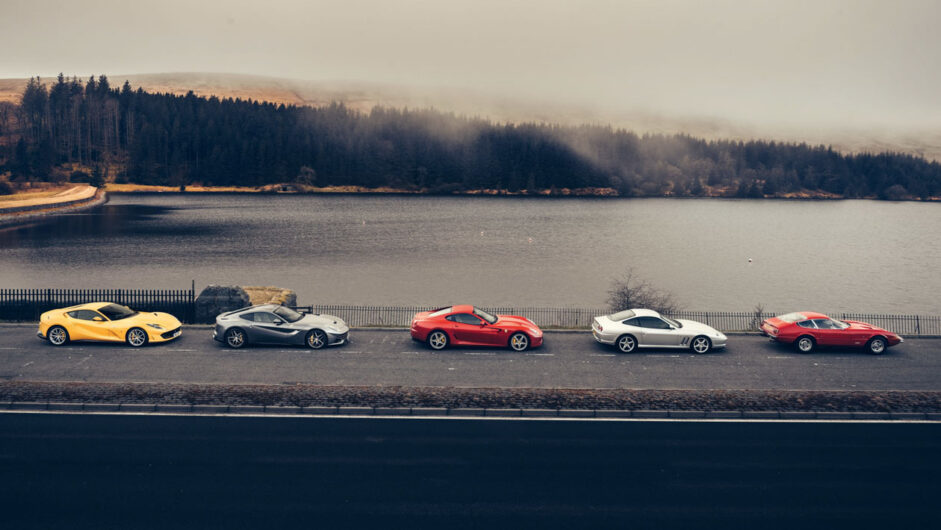
Remember the earlier allusion to the fact that the Ferrari V12 line was only technically unbroken from 1947 to the present day? Well, that’s because Ferrari replaced the 365 GTB4 with the mid-engined 365 GT4 BB, and that car and its successor, the Testraossa, had flat-12s rather than V12s. So from the end of 412 GT production in 1989 to when the 456 GT was launched in 1992, there was no V12 in the line-up. Except… the ‘boxer’ engine that powered the BBs and Testarossas wasn’t a genuine boxer with horizontally opposed pistons. Technically it was a 180-degree V12.
The true successor to the Daytona – a front-engined V12 GT with a rear-mounted gearbox – came along four years after Ferrari launched the 456 GT. The 550 Maranello borrowed heavily from the 456 both in terms of hardware and learning and was powered by a four-valve-per-cylinder version of its new 5.5-litre 65-degree V12 that was good for a tasty 478bhp. While not as beautifully sculpted as the Daytona, the 550 was simple and clean, and aerodynamically efficient, too, claiming a top speed of 320kph.
I was a fan of the 456. I liked its ride quality and its calm yet agile demeanour, and that it was suffused with traditional Ferrari character; it sounded great and almost all were manual, the auto ‘GTA’ version coming along late in the model’s life. The Maranello took the best qualities of the 456 and packaged them in a smaller, lighter, two-seat GT with a keener sporting edge. To me that read like the recipe for a sure-fire success, and within a couple of kilometres of driving it for the first time, I knew Ferrari had absolutely nailed it.
The first issue of evo came along a couple of years after the Maranello’s launch but we frequently found reasons to drive it. One was testing 15 of our favourite ‘real world’ driver’s cars – Impreza P1, Caterham Seven, E30 M3, Boxster, 968 Club Sport and suchlike – which involved laps of the tight and twisty MIRA wet handling circuit. The 550 was there as our big hitter, the aspiration, the reference, and there was a risk it would get its pants pulled down… In fact it set a lap time that incredibly would have put it sixth, between the Peugeot 306 GTi 6 and Honda Integra Type R, which said much about its intrinsic ability and exploitability.
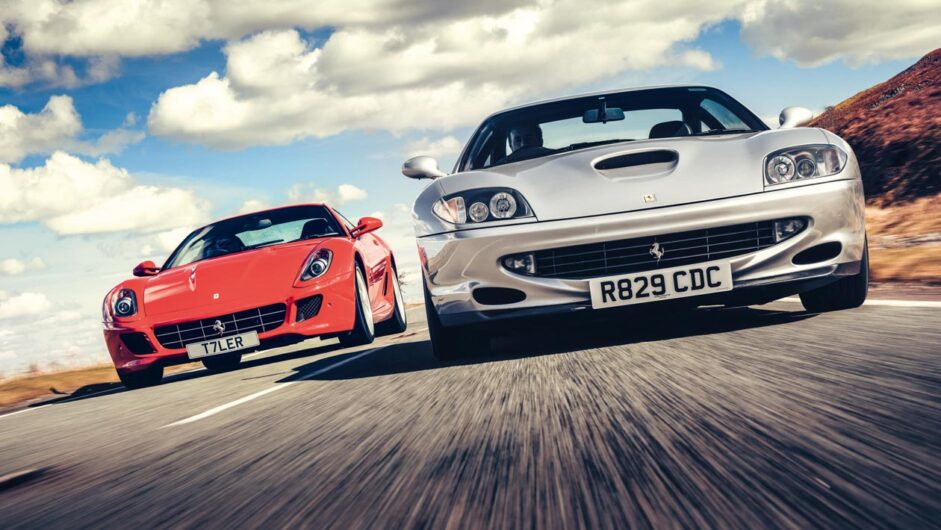
The second test it was included in (and dominated) was the ‘Greatest Driver’s Cars’ feature in 2004, which included an all-star cast from the preceding ten years, including past Performance Car and evo Car of the Year winners. You know the type: a couple of 911 GT3s, the Zonda C12S, NSX-R… The 550 walked off with the title, having been placed first by three of the five judges.
Yet despite all this I’m anxious. It’s now been over 20 years since the 550 was launched and 15 years since I drove one. Does it still impress? Of course it does. From the moment you swing the wheel at a couple of corners and feel the car react beneath you, you remember why the 550 was so admired. Perfect pitch doesn’t date and the Maranello has it. The further and faster you drive it, the more you ask it to do, the better it gets. All the elements that contribute to its dynamic character do their job just so. For instance, the steering’s rate, assistance and level of feedback are spot-on for a performance GT, and so too is the ride and body control.
> Ferrari 812 GTS 2020 review – ultimate open-top V12 thrills
It’s much faster than the Daytona of course, but although by today’s standards the Maranello’s wheels look small (they’re 18-inchers) and its tyres quite tall, performance and grip are in balance. The V12 is a gem, torque-rich and responsive with a mellow growl, and the open-gate shift is slick but even sweeter if you invest the effort. And with the hammer down the 550 flows beautifully. It’s not a light car and there’s body roll, but the nose doesn’t hesitate. It arcs for the apex, the whole car shifting its balance, the rear in play, a squeeze of throttle holding that balance, more right foot transferring more weight to the rear, allowing still more throttle. It’s exquisite, absorbing and very satisfying, corner after corner.
Settle to a cruise and it’s quiet and comfortable enough to cover big kilometres without wearing you out. Harry Metcalfe bought and ran one for a few years while he was evo’s editorial director, so when in 2006 Ferrari announced its replacement, the 599 GTB Fiorano, and invited the magazine to the launch in Italy (issue 093), it was obvious what was going to happen.

Totally refreshed in the abilities of the 550 after an epic 1600-kilometre drive south, co-editor Dickie Meaden drove the 599 and was blown away. It was everything we loved about the 550 ratcheted up, with technology added to maintain that GT balance, to deliver greater, exploitable performance but not at the expense of comfort, and to allow it to be faster in fine conditions without being a liability in poor ones.
Tech in the 550 ran to ASR traction control. The 599 has a manettino, coordinating its continuously adaptive dampers, F1-Trac – Ferrari’s predictive traction/stability control system – and the throttle response and shift strategy of its automated manual gearbox (very few cars were ordered with the conventional manual). And with 611bhp from its detuned Enzo V12, it wasn’t so much a GT as a super-GT.
All of that comes across today when driving the example you see here, owned by Scott Tyler. It’s not a small car like the 550, though. The early 2000s was a period when Ferrari seemed to be working on the principle that bigger was better. In the V8 line, the clean 360 Modena had been replaced by the more aggressive, bigger-looking 430, and the same happened in the V12 line. With its open rear buttresses and longer wheelbase and overhangs, the 599 makes the 550 look bijou. Yet utilising an aluminium monocoque rather than being built around a tubular steel frame, the 599 comes in at an identical 1690kg.
The 599 is also structurally much stiffer, which improves its responsiveness and accuracy. Initially, you have to dial back your inputs, so much lighter and quicker is the steering and so much keener is the car to turn. That Enzo-derived 6-litre V12 sounds glorious and fires the 599 up the road with a seemingly endless supply of torque, but the chassis is up for it. It’s a bit tougher than the 550’s but compliant enough, and it has a fabulously natural balance that makes it agile. The 47/53 front-to-rear weight distribution means there’s superb mechanical traction too, so you can deploy remarkable amounts of power before the systems intervene noticeably.
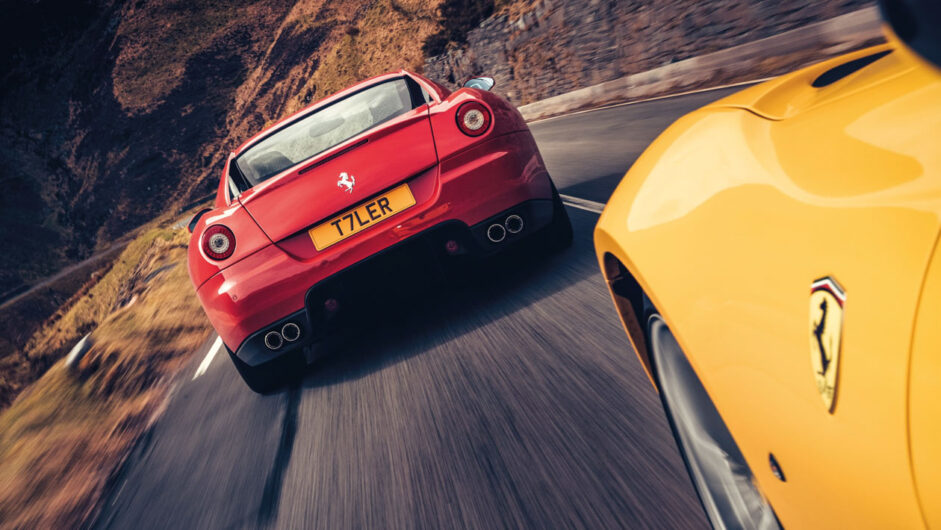
Best of all you feel at the heart of it all, beautifully supported by the well-bolstered seat, informed through the fat rim of the steering wheel. Some have embedded shift lights, but honestly, you don’t need a visual reminder that the V12 is peaking – the nape-tingling cry of it lunging past 7000rpm does that. Even the automated manual works well, something that couldn’t be said of similar offerings from other car makers. At times the 599 rides a bit tougher than the 550, especially this HGTE (Handling Gran Turismo Evoluzione) pack example, but by every measure it improves on the 550. It can cover continents in comfort and entertain beyond the limit, all aids backed off. It’s a genuinely great Ferrari.
Right now though, it’s also a somewhat unrecognised one. Most cars become invisible at some point in their lives, or rather we become blind to them, when they are neither new nor classic and their appeal flounders. This is a smelling-salts reminder that the 599 is great value right now, and good-looking too. At launch it seemed a bit too like the not-so-handsome 612 Scaglietti, but even the 612 looks good now, in the right colour. We’d go for the standard 599 rather than one with the HGTE pack – while the 575 was transformed by its handling pack into the car it always should have been, I’ve never seen the need for the option on the 599, unless you like your handling with sharp edges.
The 599 had a long life, deservedly so, and so it’s no surprise that visually its successor was quite different. Underneath, the F12 Berlinetta was essentially the same: front-mid-mounted V12, transaxle, all-aluminium monocoque. However, aerodynamics were starting to exert more influence over styling, as we’d already seen in Ferrari’s mid-engined V8s with the 458, and the F12 had a bonnet and flanks that looked like wind-sculpted dunes. It also featured intakes with flaps that opened when more brake cooling was required. So highly functional, yes, but handsome? Not in the company of the Daytona, Maranello and Fiorano.
The statistics of the F12 were as staggering in 2012 as the 812 Superfast’s are today. Compared with the 599, the F12 was 47mm shorter, with half the rear overhang, lower by 62mm and a little (20mm) narrower. It was also a substantial 60kg lighter, which is even more impressive considering that the automated manual had been replaced by a heavier dual-clutch transmission. Add in next-generation adaptive dampers, advances in the refinement and reach of Ferrari’s renowned stability and traction control systems, and that seamless gearbox, and you’ve got a formidable package; topping it all, a massively more potent version of the Enzo V12, a 6.3-litre iteration good for no less than 730bhp.
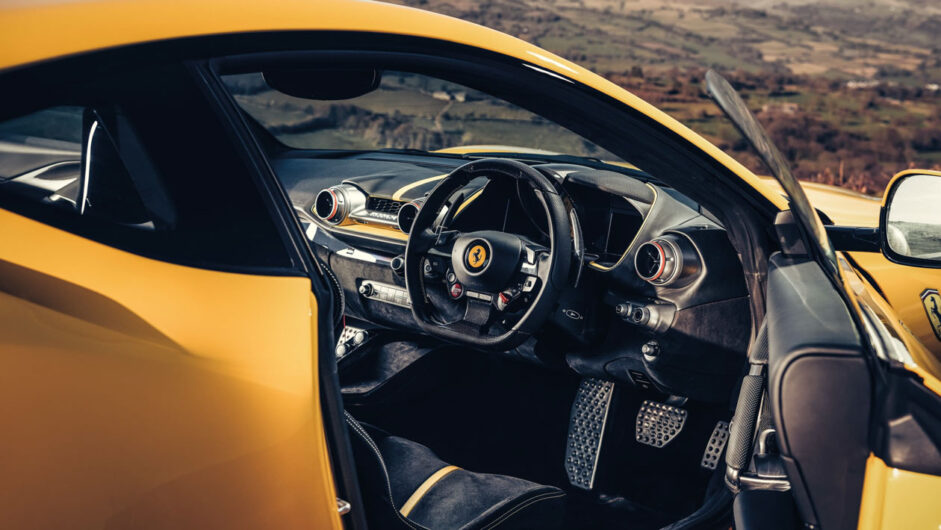
What’s interesting for me is that I’m driving the F12 for the first time, having just stepped out of the 599 and having driven to Wales in the 812 Superfast… Which is why I’m probably one of the few people to ever have got out of the F12 thinking it wasn’t that fast. Yes, right from the get-go it feels more potent than the 599, and in the lower reaches of its rev range it’s every bit as lung-squeezingly accelerative as the 812, but it doesn’t have the Superfast’s loopy top end.
Initially there’s a more rounded feel to its ride, so it has more in common with the 599 HGTE than the 812, though this is quickly revealed to be a veneer: as soon as you find turbulent tarmac you’re through to robust wheel and body control, the F12 moving all of a piece over bigger undulations. Partnering this is direct, fast-acting steering, which is sometimes not what you want. However, the feel and sense of strong mechanical grip and traction is exactly what you want.
There’s copious and instant torque available from that magnificent V12, but the electronic systems working away in the background are finely honed, so even when they intervene they are notably more subtle than those of the 599, which means you can find more grip and more drive out of corners. With the electronics dialled back you can send the back end wide in all sorts of corners, and keep it there, but it requires calm steering inputs. Compared to the 812 and 599, there’s detail missing from the F12’s steering; it’s a bit glassy in feel until the front end is loaded, and when you have so much potential under your right foot, you notice.
Is the F12 a GT or a supercar? We sought to answer that back in 2013, testing the Ferrari against the Aston Martin Vanquish and a Lamborghini Aventador, the 690bhp LP700‑4. Our conclusion was that the F12 was both and neither, and we gave the nod – just – to the Aventador.
It might be coincidence that its replacement, the 812 Superfast, has swung more to the supercar end of the scale, both in feel and performance. Some argue that because the 812’s engine is in the front, not the middle, it can’t be considered a supercar. I can only assume that these people haven’t driven it, or compared it with a ‘proper’ mid‑engined supercar.
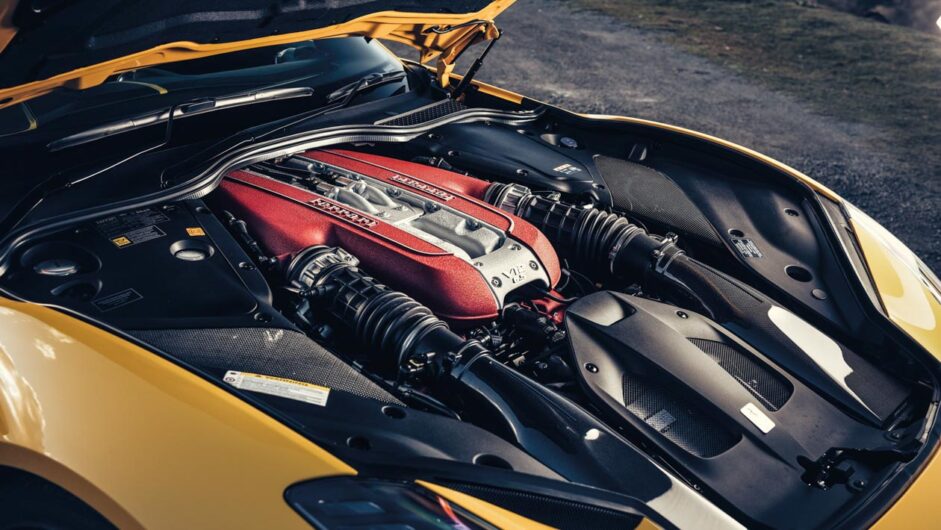
There’s always a comparable Lamborghini lurking, in this instance the range-topping Aventador SVJ. With its 6.5-litre V12 and four-wheel drive, the Lambo gets to 100kph in 2.8sec, hits 200kph in just 8.5sec and tops out at 350kph. The rear-drive Ferrari isn’t quite as fast flat out, hitting just 340kph, and it’s a tenth shy to 100kph too, but it does get from a standing start to 200kph in under eight seconds, which really is properly super.
Having driven both the SVJ and Superfast, I know that you’ve really got to want the attention the Lamborghini attracts. They’re two different answers to the same question, but the rear-drive Superfast both packs more technology and behaves in a more exploitable, traditional way. It makes the Aventador feel like an anachronism with its single-plate clutch, like an old-school supercar with its 43/57, front/rear weight distribution. All of the Superfast’s engine is behind the front axle line, helping give a 47/53 weight distribution, and that means you can play with it at and over the limit. Preferably on track.
You need to build up to that, though. Even after the F12, you can’t hop in the Superfast and take it straight to the red line. Simon Tate, owner of the Maranello, ran an F12 for nine months, and Guy Cherry has racked up over 50,000 kilometres in this F12, and they were both stunned by the ferocity of the 812’s performance. Up to about 5500rpm the urge is familiar, but after that the shove escalates crazily, like it’s hit nitrous or some super-VTEC mode. Keep your foot in and you’ll be rewarded with a strip of red shift lights and, finally, a pair of blue ones. Not everyone gets to the blue lights.

There are a couple of reasons it feels so much stronger. The first is the uplift from 730 to 789bhp, which comes partly through an increase to 6.5 litres but is mostly at the top end. The second is that the gearing has been shortened compared with the F12’s, hence why the top speed is still ‘only’ 340kph.
Ferrari has loaded the 812 with tech to help make it exploitable too, including rear-wheel steering to help agility and poise, and Side Slip Angle Control and Ferrari Dynamic Enhancer to help hold power slides neatly and with confidence. Ride quality is the price you pay for having access to such epic amounts of power and torque. The Superfast will mooch around – the gearbox is slick, the V12 flexible and docile – and it’s comfortable for long hours of cruising too, though unless the surface is super smooth there’ll be a bit of an edge.
Plot the power outputs of the 550, 599, F12 and 812 on a graph and the line they make, extended, suggests that the 812 replacement will have 835bhp when it arrives in 2024. Sadly, I can’t help thinking that the way things are headed, while it might indeed have that amount of power or more, it might not be a ‘simple’ rear-drive GT with just a naturally aspirated V12. I hope I’m wrong. Now seems like a good time to enjoy them while we can. I wonder how 599 prices are faring at the moment…
This article originally appeared at evo.co.uk
Copyright © evo UK, Autovia Publishing

